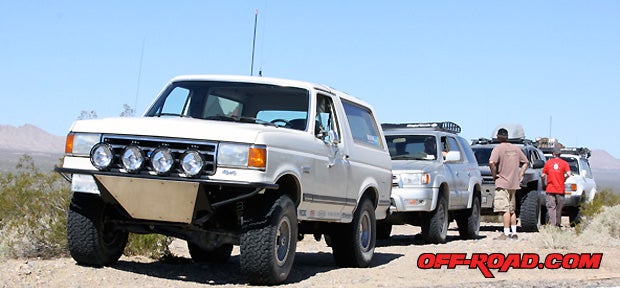
Continuing our off-road adventure from last time, we start the second leg of the trip through the Mojave National Preserve, heading south to the desert town of Kelso, CA.
If you missed the first part of our adventure, make sure to check out Off-Road Travel: Mojave National Preserve, Part I.
We began our day at the base of the Marl Mountains with breakfast followed by a vehicle inspection and then campsite teardown. In the distance we could see the Kelso dunes glimmering next to the Kelso train depot--a place we would visit later that day.

After a quick visit to Marl Springs, Shane and Kevin plotted a route that would leave the Mojave Road and cut directly across to Kelso. We found a pole line road faintly marked on the map less than .25 miles east of Marl Springs.
The dirt road seemed like it wasnít used much, and we realized why a few miles down. Wires across the old wooden poles were missing in sections; they also had glass insulators, something that has not been used since the late Ď60s. In other words, this pole line was no longer maintained and the road had been abandoned.
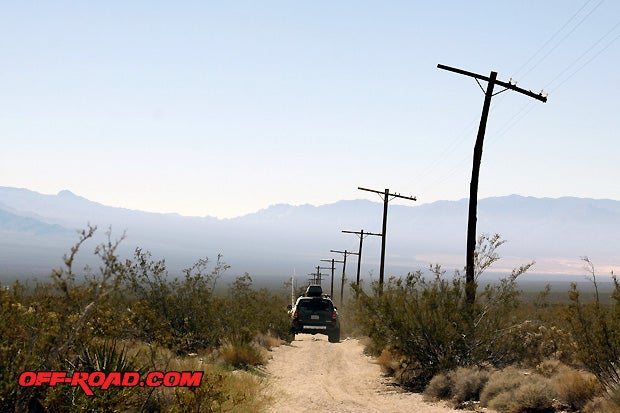
Re-tracing this old pole line road was a real treat. The plants were overgrown along the road, but we managed to get by with minimal desert pin-stripping. We followed the trail for about 10 miles, and it did eventually tie into Kelso Cima Road, which would take us to Kelso.
KELSO DEPOT & GHOST TOWN
Kelso, California, was once a town of close to 2,000 residents that consisted of Union Pacific and Vulcan Mine workers. Kelso Depot was home to helper locomotives working the Cima grade. Maintenance and engine crews were on hand 24 hours a day for any troubles the steam locomotives might have while crossing the Mojave Desert.
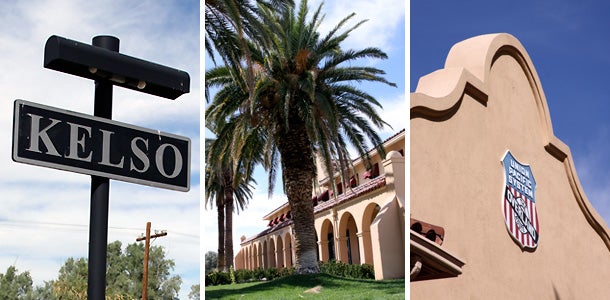
In 1924, Union Pacific built a facility for workers that had a rooming house, restaurant and clubhouse all under one roof. The Kelso Depot served railroad workers for nearly 40 years before closing down.
Make sure to stop by and enjoy this 1920s Union Pacific train depot that once served thirsty travelers and steam locomotives on their way from Salt Lake City to Los Angeles. The Kelso Depot today serves as the Mojave National Preserve visitor center.
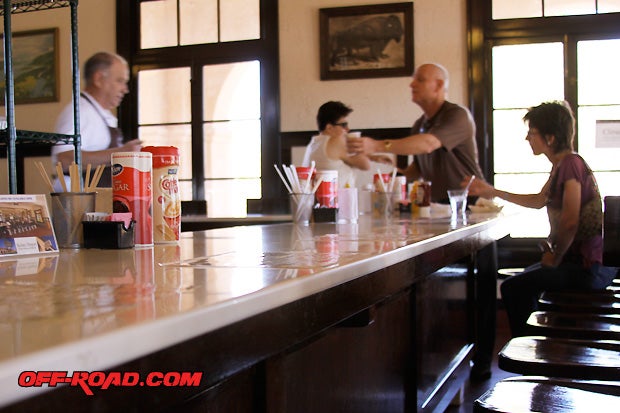
Inside you will find park information, current road conditions and exhibits on desert ecology, local history and even a 1920s diner. They also have a nice bookstore with some off-road trail books of the region.
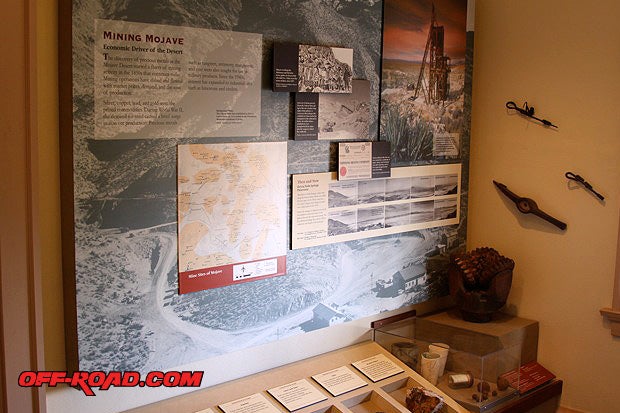
One exhibit inside the Kelso Depot talks about the mining history of the region. Trains from Kelso helped transport iron ore from the Vulcan mine down to the Kaiser Steel Mill in Fontana, CA. Steel from Kaiser was then used to build Liberty ships during World War II. This is the same Henry J. Kaiser that merged with Willys-Overland and formed Kaiser Jeep. You know, the vehicle that revolutionized 4x4.
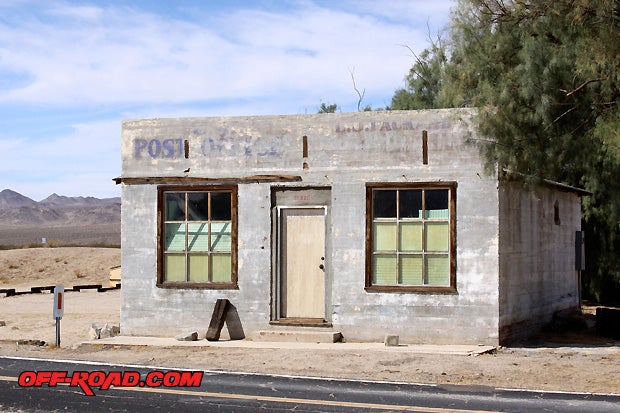
VULCAN MINE
From Kelso Depot, our next stop was the Vulcan Mine located 9 miles southeast from Kelso. Traveling south on Kelbaker Road, we passed the Kelso Dunes and Devilís Playground. Although the dunes did look very inviting, they are a tease. You canít go off-roading in them, only hiking. So we kept driving.
On the left, we found the Vulcan Mine Road. It is an unmaintained dirt road, rough in spots, but very do-able in a high-clearance vehicle. Once at the mine, we were able to get out and explore on foot. Some old concrete slabs and small structures are scattered around the Vulcan Mine but not much else.
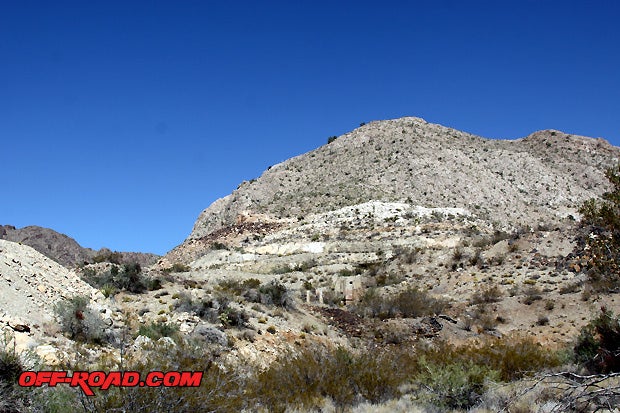
After a few hours of exploring the Vulcan Mine, we sat under a grove of trees next to the mine and had a nice lunch overlooking the Devilís Playground and Kelso Dunes--tease.
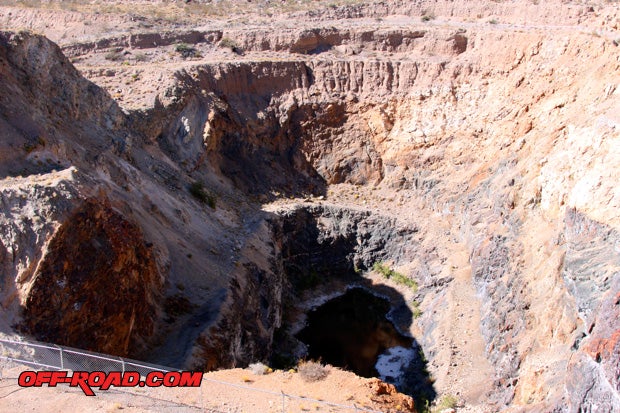
Our next stop was the Bonanza King Mine in the Providence Mountains.
BONANZA KING MINE & PROVIDENCE GHOST TOWN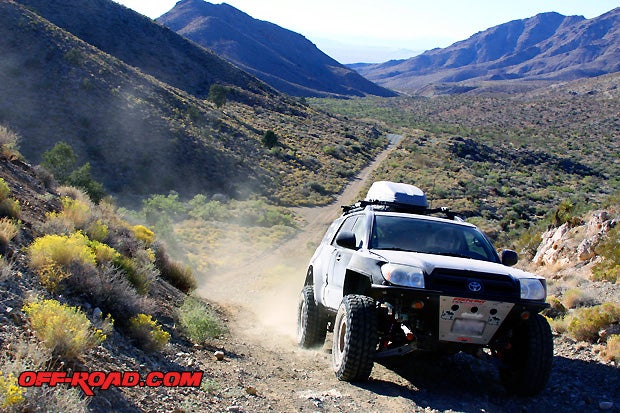
We were able to continue our off-road adventure on dirt for another 8 miles, via the Vulcan Mine Road. Driving over the Providence Mountains was fun; we had to kick down into 4LO to throttle up a steep hill climb.
Once on the east side of the Providence Mountains, we hooked up with Essex Road (paved) and headed northwest. A few miles up the road, we turned off onto a dirt road that clearly headed up into the Providence Mountains and Bonanza King Mine. Itís not well marked, so this is where GPS and maps come in handy. Our trail leader Shane was well equipped and led us right to it.
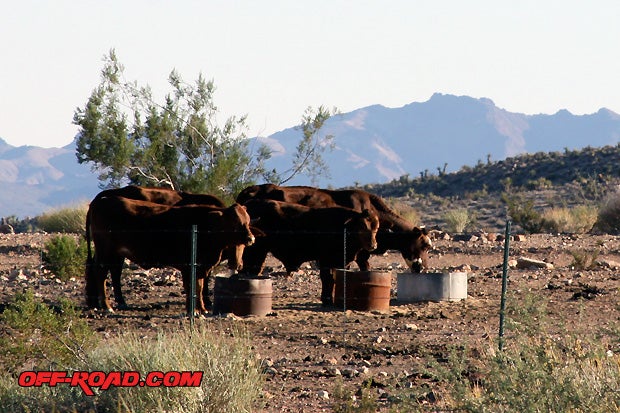
The Bonanza King Mine is in an area known as the Trojan Mining District (A.K.A. Providence Mining District). Silver was discovered here in 1883 with several claims. The booming Bonanza King Mine was the largest of the silver mining operations, and by 1890 had over 190 residents in what became the town of Providence. Furnished with a general store, post office and two saloons, miners of the Bonanza King Mine and surrounding claims made this their home through the early 1900s.
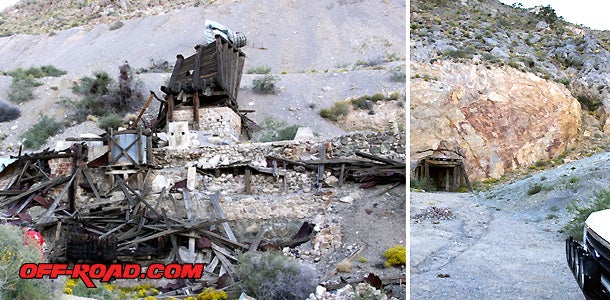

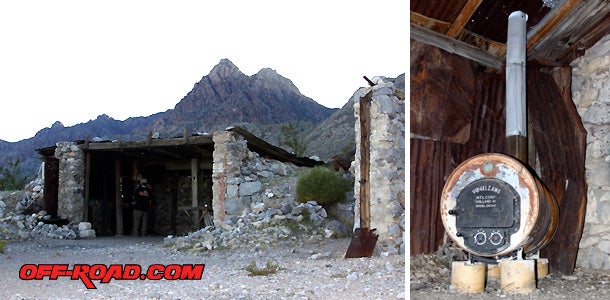
Night fell on our group while at the Bonanza King Mine, and our Mojave National Preserve trip also came to an end. We headed a few miles south to connect with I-40, and made our way back to civilization.
There is still more to explore. With over 1000 miles of dirt roads to travel within the park, weíve only touched the surface. We hope this preview of other things beyond the Mojave Road will get you excited about making tracks on your very own off-road adventure.
For more information, we recommend you check the following resources:
FREE Mojave National Preserve Map [PDF] http://www.nps.gov/moja/planyourvisit/maps.htm
Mojave National Preserve 2701 Barstow, CA 92311 760-255-8801 http://www.nps.gov/moja
Mojave Guide Books & Maps Online Trail Guide & Topo Maps, including works from Wilderness Press, Adler Publishing and FunTreks. http://www.trails.com/
Mojave Desert Heritage & Cultural Association
Research and conservation of the natural and cultural history of the Mojave Desert region. Also publishes a very detailed guide to the Mojave Road, by Dennis Casebier.
http://www.mdhca.org/


 Your Privacy Choices
Your Privacy Choices